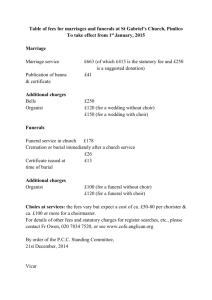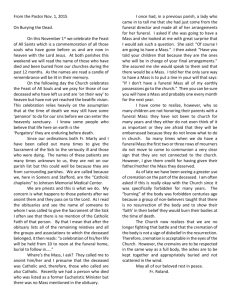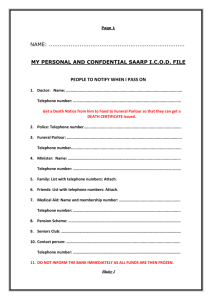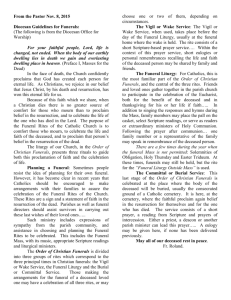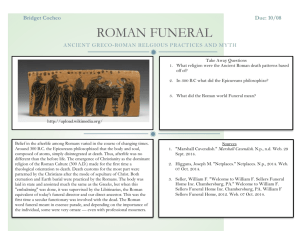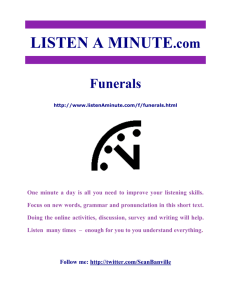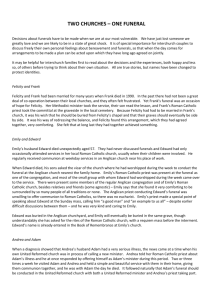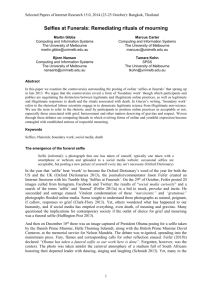Spirituality in Contemporary Funerals Progress report to Project
advertisement
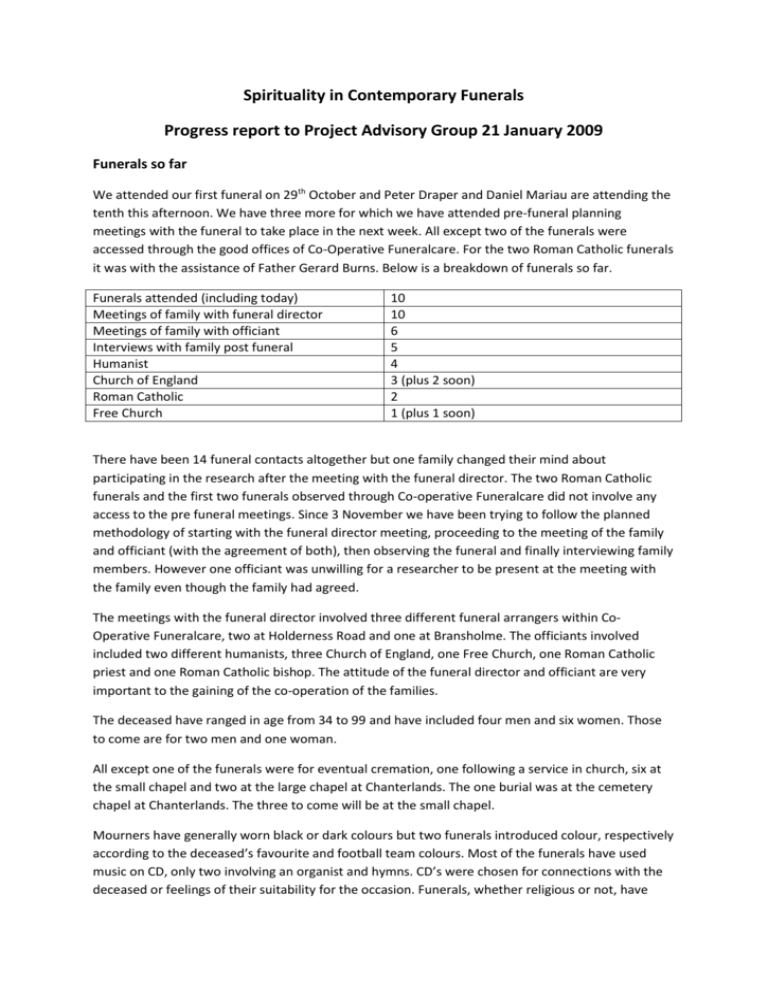
Spirituality in Contemporary Funerals Progress report to Project Advisory Group 21 January 2009 Funerals so far We attended our first funeral on 29th October and Peter Draper and Daniel Mariau are attending the tenth this afternoon. We have three more for which we have attended pre-funeral planning meetings with the funeral to take place in the next week. All except two of the funerals were accessed through the good offices of Co-Operative Funeralcare. For the two Roman Catholic funerals it was with the assistance of Father Gerard Burns. Below is a breakdown of funerals so far. Funerals attended (including today) Meetings of family with funeral director Meetings of family with officiant Interviews with family post funeral Humanist Church of England Roman Catholic Free Church 10 10 6 5 4 3 (plus 2 soon) 2 1 (plus 1 soon) There have been 14 funeral contacts altogether but one family changed their mind about participating in the research after the meeting with the funeral director. The two Roman Catholic funerals and the first two funerals observed through Co-operative Funeralcare did not involve any access to the pre funeral meetings. Since 3 November we have been trying to follow the planned methodology of starting with the funeral director meeting, proceeding to the meeting of the family and officiant (with the agreement of both), then observing the funeral and finally interviewing family members. However one officiant was unwilling for a researcher to be present at the meeting with the family even though the family had agreed. The meetings with the funeral director involved three different funeral arrangers within CoOperative Funeralcare, two at Holderness Road and one at Bransholme. The officiants involved included two different humanists, three Church of England, one Free Church, one Roman Catholic priest and one Roman Catholic bishop. The attitude of the funeral director and officiant are very important to the gaining of the co-operation of the families. The deceased have ranged in age from 34 to 99 and have included four men and six women. Those to come are for two men and one woman. All except one of the funerals were for eventual cremation, one following a service in church, six at the small chapel and two at the large chapel at Chanterlands. The one burial was at the cemetery chapel at Chanterlands. The three to come will be at the small chapel. Mourners have generally worn black or dark colours but two funerals introduced colour, respectively according to the deceased’s favourite and football team colours. Most of the funerals have used music on CD, only two involving an organist and hymns. CD’s were chosen for connections with the deceased or feelings of their suitability for the occasion. Funerals, whether religious or not, have used poems, some chosen by the family/written by the deceased or family members and some chosen by the officiant. The approaches taken by the two humanists were similar, centring on a detailed account of the life of the deceased and using similar material. The Christian funerals varied widely in content and formality. Other matters We have met with Frank Stephenson of Beverley who are willing to join us as a second co-operating funeral director. We have met with the university press office to arrange a press release. The press officer tells us there is interest from the Guardian. We have set up a webpage on the university website and hope to add material as it becomes available. We have sent out literature to Roman Catholic priests in the area. We have attended meetings of Hull and East Riding Interfaith. We have been in touch with the Registrar’s Office for the East Riding. S.E.A. 28 Jan 2009
